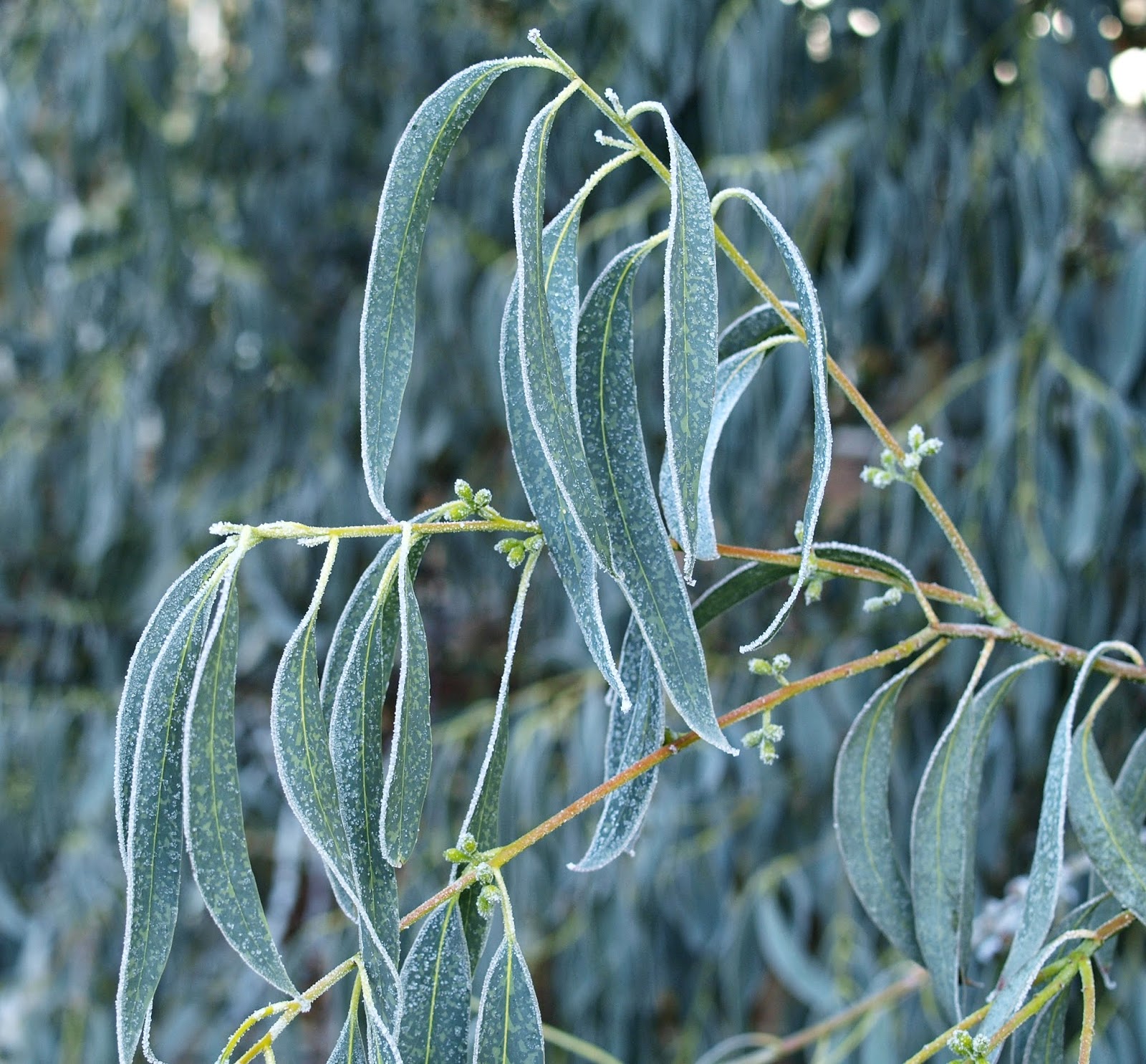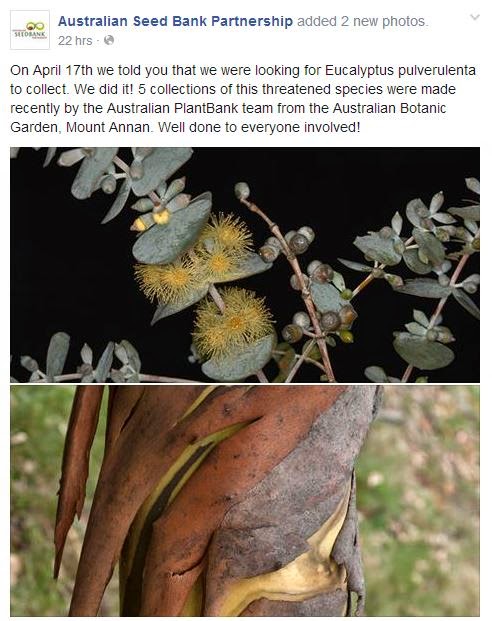Blotto on blue gum
We are growing two kinds of gum tree in our Hampton Court Palace Flower Show garden. With a name like 'Little Boy Blue', the dainty cultivar of the Silver-leaved Mountain Gum (Eucalyptus pulverulenta) from grassy woodlands in southern New South Wales surely won't get you drunk. The other, the Cider Gum (Eucalyptus gunnii) from Tasmania, might just do it.
They both have waxy-blue, roundish leaves at first, and, if you allow them, longer sickle-shaped leaves (like those in frosty photo above) more typical of a eucalypt later in life: you can keep eucalypts forever young with regular and rather aggressive pruning.
Without pruning, Eucalyptus ‘Little Boy Blue’ could get to 20 metres, but it is bred from a mallee species, which means it's naturally multi-stemmed and typically more like large bush than a tree. Judicious trimming can keep it at 2-3 metres up and across. It should be hardy in much of the UK if given some protection from the worst of the weather (e.g. south side of a wall). We featured this cultivar in our gold-winning 2011 Chelsea Flower Show garden.
And the species, Eucalyptus pulverulenta, was featured recently on the Facebook page of the Australian Seed Bank Partnership, a national effort to conserve Australia's flora through seed collecting, banking, research and knowledge. On 13 May 2014 they excitedly informed their Facebook friends that seed from a natural population had been collected and stored.
Like Cider Gum, the bark is flaky, the foliage good for cut-flower arrangements and the flowers creamy and fragrant in spring. But no-one drinks 'Little Boy Blue'. Cider Gum, on the other hand, has been drunk, and undoubtedly some have been drunk on it. Whether you should, and whether you would benefit from that experience, is a question I can't answer.
You can be pretty sure from it's botanical name that Eucalyptus gunnii is from Tasmania. It was named by Sir Joseph Hooker, Director of Kew Gardens from 1865 to 1885, after the South-Africa-born plant collector and politician Ronald Gunn. Gunn spent most his life in Tasmania, gathering plants and plant enthusiasts, and he was highly regarded by Hooker. His name is hard to miss in any guide to Tasmanian native plants.
European settlers in Tasmania would tap Cider Gum like you would a Maple, to extract the sap from its trunk. Fermentation turned it into what has been described as a 'cider-like drink'. I suspect this means it has alcohol in it and tastes more like an apple than hops, barley or molasses. I think beer and rum were the other popular drinks of the time.
Like all eucalypts, it had other uses too. Any alcohol can make a handy antiseptic, but eucalyptus oil (unfermented) has been used to kill skin bacteria in Australia, and later around the world. These days eucalyptus oil is more commonly used to remove stains and treat colds and flu.
The first inhabitants of Australia were of course on the many uses of the gum tree already. Aboriginal people have used eucalyptus leaf oil as a disinfectant for tens of thousands of years. The also use sap for the same purpose, boiling it in water until dissolved and then rubbing into cuts and bruises. And heartwood diluted in boiled water was used to treat diarrhea.
Like the early Europeans settlers, Aboriginal Australians do digest eucalypts, using seed to make flour for damper, roots as another source of starch, and nectar drinks from the flowers of species such as the Manna Gum (Eucalyptus viminalis).
Making cider from Cider Gum was their idea too. In spring, Tasmanian Aboriginal people cut a hole in the trunk of the Cider Gum, eating the sap or boiling in water to make a thick syrup. Sometimes the syrup is used to make a cider-like drink, favoured for corroborees. There are some who think there is bigger market for a maple-syrup like product, or a fermented drink, from the Cider Gum.
Until then, enjoy its aromatic blue leaves as a garden plant at home, or in our aptly named Essence of Australia garden at Hampton Court Palace in a couple of weeks.
Images: the top and bottom pictures are from one of the large and beautiful eucalypts growing near the Jodrell Laboratory in Kew Gardens, photographed on a frosty morning in December 2012. The others are images (taken by Jim Fogarty) from Viveros Medipalm, the nursery in Spain from where we sourced most of our plants for the show garden.

.jpg)

.jpg)


Comments